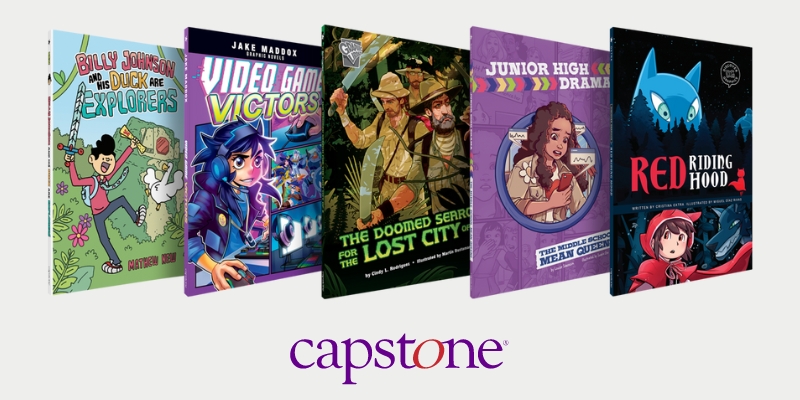Let’s chat about graphic novels for kids. If you’re picturing superheroes in capes or the comic strips from your daily newspaper, you’re not entirely wrong, but there’s so much more to them than that. Graphic novels are a unique blend of art and storytelling that have become an incredible resource for students. They’re not just fun to read – they’re also powerful tools for learning and engagement. So, what makes them so special? Let’s dive in.
What Exactly Are Graphic Novels?
First off, let’s clarify what we mean by “graphic novels.” In simple terms, a graphic novel is a book-length story told through a combination of words and pictures. Think of it as a movie on paper, where the visuals are just as important as the dialogue and narrative. Unlike traditional novels, which rely solely on text, graphic novels use sequential art—panels of images that work together to tell a story.
But here’s the thing: graphic novels for kids aren’t just one genre. They’re a medium, which means they can encompass a wide variety of genres and topics. Whether you’re into fantasy, history, science fiction, or real-life stories, there’s a graphic novel out there for you. This versatility is one of the key reasons they’ve become so popular in schools and libraries.
Why Are Graphic Novels So Engaging?
One of the standout features of graphic novels is their ability to engage readers, especially students who might be reluctant to pick up a traditional book. The combination of visual storytelling and text makes them accessible and appealing. For students who struggle with reading or simply find it boring, graphic novels can be a game-changer. The images help break down complex narratives into bite-sized, manageable pieces, making the story easier to follow.
Imagine trying to explain the nuances of a historical event to a middle schooler using just words. Now, imagine doing the same with a graphic novel that visually depicts the key moments, emotions, and consequences. The impact is immediate and much more relatable. This is why graphic novels for kids are so effective in educational settings—they make learning visual and interactive. The Capstone Library, which is a popular reading platform, is known to have a huge collection of Graphic Novels for little readers.
The Visual Impact: A Key Characteristic
Speaking of visuals, the artwork in graphic novels isn’t just there to look pretty. It plays a crucial role in the storytelling process. The use of panels, speech bubbles, and narrative boxes guides the reader’s eye and helps convey emotions, actions, and atmosphere in ways that words alone can’t. The pacing of the story is controlled by the size and arrangement of panels, creating a dynamic reading experience.
For students, this visual storytelling is incredibly engaging. It’s like watching a movie unfold in their hands, where they control the pace. This can be particularly helpful for visual learners, who can connect with the material more easily when it’s presented in a way that aligns with their strengths.
Why Graphic Novels Are Perfect for Developing Literacy Skills
Now, let’s talk about literacy. One might assume that because graphic novels have fewer words, they’re not as valuable for developing reading skills. But that’s not the case. Graphic novels for kids require readers to infer meaning from both the text and the images, which can actually enhance comprehension skills. Readers have to pick up on visual cues, understand the sequence of events, and interpret the emotions and motivations of characters—all of which are critical thinking skills.
Moreover, the dialogue in graphic novels is often more realistic and natural than the prose found in traditional novels, which can help students develop a better understanding of conversational language. This makes graphic novels particularly effective for students learning English as a second language.
The Emotional Connection
Another unique characteristic of graphic novels for kids is their ability to create a strong emotional connection with the reader. The combination of visual and textual elements allows for a deeper engagement with the characters and the story. When students see the expressions on the characters’ faces and the detailed settings in which the story takes place, they’re more likely to feel a connection to what they’re reading.
This emotional engagement can be a powerful tool in the classroom. When students are emotionally invested in a story, they’re more likely to retain the information and think critically about the themes and messages. Graphic novels can spark discussions, encourage empathy, and inspire creative thinking—all important components of a well-rounded education.
Versatility in the Classroom
Finally, graphic novels for kids are incredibly versatile in educational settings. Teachers can use them to introduce complex subjects, like history or science, in a way that’s engaging and accessible. They can also be used to explore themes like identity, diversity, and social justice, providing students with a broader perspective on the world around them.
For students who are already avid readers, graphic novels offer a different kind of challenge. They can analyze the interplay between text and image, explore the unique narrative structures, and even create their own graphic stories. This versatility makes graphic novels a valuable addition to any classroom or library.
Graphic novels are more than just entertaining reads—they’re a powerful educational tool. Their unique blend of visual and textual storytelling makes them accessible, engaging, and effective for developing a wide range of literacy skills. Whether used to support reluctant readers or to challenge advanced ones, graphic novels have a place in every student’s learning journey. So, if you haven’t explored the world of graphic novels yet, now’s the perfect time to start. You might just find that they’re the missing piece in your educational toolkit.






Recent Comments